
THE RULERS OF EGYPT's 26th Dynasty contended with the prospect of foreign invasion from the start. The initial threat came from the Assyrians to the northeast, but the dynasty's founder, Psamtik I, made a strategic alliance with them. While playing the part of the loyal vassal, the pharaoh expanded from his power center in the Nile Delta to control all of Egypt, fortifying his armed forces with Greek mercenaries. Next on the horizon were the Babylonians, local rivals T 25th (Nubian) D to the Assyrians, whom the Egyp- REIGN DAT tians helped keep at bay by sending reinforcements. From the south, the Nubians, who had ruled Egypt as the 25th Dynasty, attempted to reclaim control, but were rebuffed. During the rule of the pharaoh Amasis, the Babylonians continued to pose a problem, though a manageable one.
Meanwhile, an empire the likes of which had never been seen before was amassing power and expanding from its core in present-day Iran. By 530 B.C., the Persian Achaemenid Empire controlled territory from the Aegean Sea to the Hindu Kush mountains. Amasis hired more Greek mercenaries and built up his naval forces, but when he died in 526 B.C. and was succeeded by his untried son, Psamtik III, the Persian king Cambyses struck quickly and added Egypt to the empire's holdings.
この記事は Archaeology の May/June 2023 版に掲載されています。
7 日間の Magzter GOLD 無料トライアルを開始して、何千もの厳選されたプレミアム ストーリー、9,000 以上の雑誌や新聞にアクセスしてください。
すでに購読者です ? サインイン
この記事は Archaeology の May/June 2023 版に掲載されています。
7 日間の Magzter GOLD 無料トライアルを開始して、何千もの厳選されたプレミアム ストーリー、9,000 以上の雑誌や新聞にアクセスしてください。
すでに購読者です? サインイン

ORIGINS OF PERUVIAN RELIGION
While investigating looters' holes at the site of La Otra Banda in northern Peru's Zaña Valley, archaeologist Luis A. Muro Ynoñán of the Field Museum and the Pontifical Catholic University of Peru spotted carved blocks around seven feet below the surface.

ISLAND OF FREEDOM
Many of the enslaved Africans sent to Brazil beginning in 1549 were from what is now Angola, where one of the most widely spoken languages was Kimbundu.
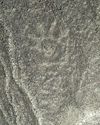
NAZCA GHOST GLYPHS
From the 1940s to the early 2000s, geoglyphs were discovered in the Nazca Desert of southern Peru depicting animals, humans, and other figures at the rate of 1.5 per year.

COLONIAL COMPANIONS
The ancestry of dogs in seventeenth-century Jamestown offers a window into social dynamics between Indigenous people and early colonists.
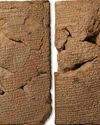
BAD MOON RISING
The British Museum houses around 130,000 clay tablets from ancient Mesopotamia written in cuneiform script between 3200 B.C. and the first century A.D.
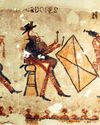
DANCING DAYS OF THE MAYA
In the mountains of Guatemala, murals depict elaborate performances combining Catholic and Indigenous traditions
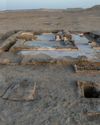
LOST GREEK TRAGEDIES REVIVED
How a scholar discovered passages from a great Athenian playwright on a discarded papyrus

Medieval England's Coveted Cargo
Archaeologists dive on a ship laden with marble bound for the kingdom's grandest cathedrals

Unearthing a Forgotten Roman Town
A stretch of Italian farmland concealed one of the small cities that powered the empire
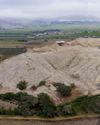
TOP 10 DISCOVERIES OF 2024
ARCHAEOLOGY magazine reveals the year's most exciting finds